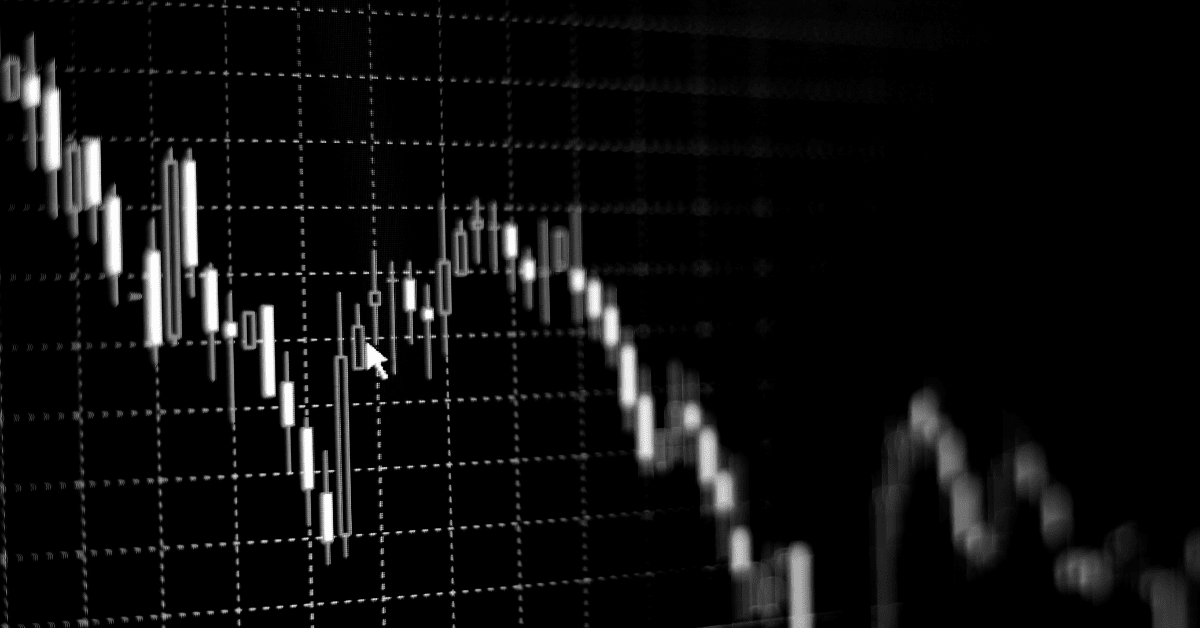Doji and Spinning Top patterns allow us to decipher and predict market movements, which can be the difference between profit and loss.
One of the most revered tools in a trader’s arsenal is understanding candlestick patterns.
These patterns originated in 17th-century Japan and offer visual cues about potential future price movements based on past actions.
These patterns are significant indicators among the myriad of candlestick formations.
This article delves into these two patterns, shedding light on their characteristics, implications, and how you can harness their predictive power to make informed trading decisions.
I’ve been trading Forex and other markets since 2007, and in this article, I will share my experience using Japanese candlesticks.
I’ll also illustrate using them with other tools and indicators for higher success probability.
Understanding Candlestick Basics
At the heart of Forex chart analysis is the candlestick, a graphical representation that encapsulates the open, close, high, and low prices of a specific time frame.
Each candlestick tells a story of market sentiment. Its body illustrates the difference between the opening and closing prices, and its wick or shadow reveals the highest and lowest prices reached.
The color or shade of the candlestick body indicates whether the closing price was higher (often colored or filled) or lower (usually hollow or a different color) than the opening price.
By studying these candle formations, you can gain insights into potential market directions and shifts in trader sentiment.
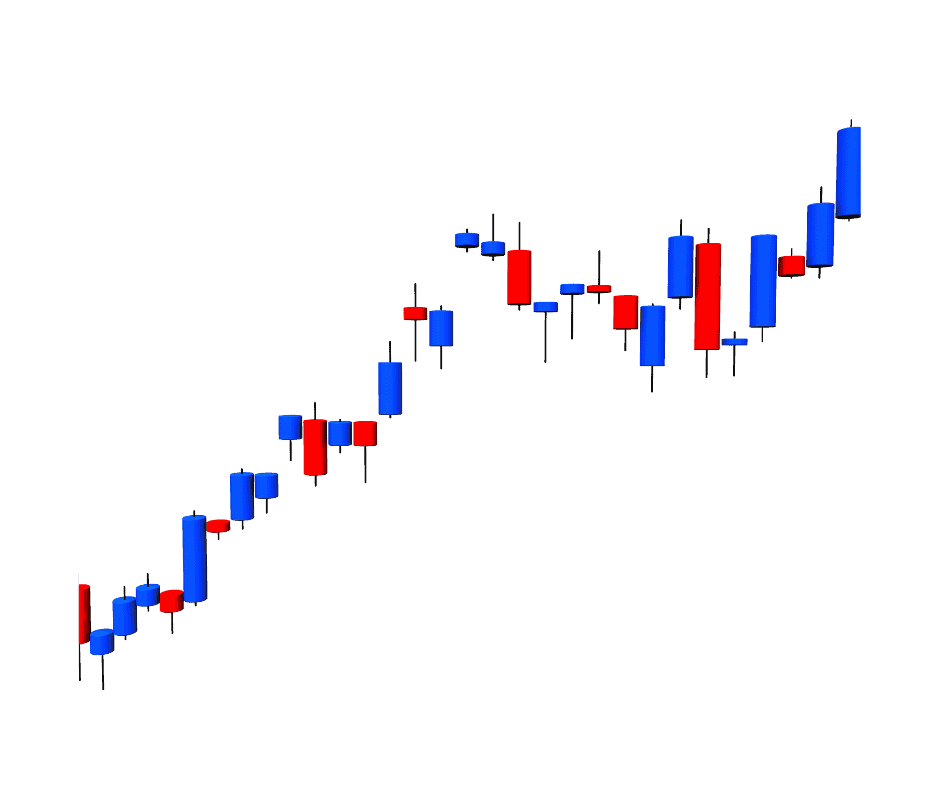
The Doji Pattern
The Doji is a distinctive candlestick pattern that often captures traders’ attention due to its unique appearance and the market indecision it signifies.
Characterized by a very small or non-existent body, it indicates that the opening and closing prices for a given time frame were virtually identical.
This equilibrium between buying and selling pressures can manifest in various patterns, such as the Neutral Doji with small shadows, the Long-Legged Doji with extended shadows, the Dragonfly Doji, where the open and close are at the high of the day, and the Gravestone Doji, where they are at the low.
When it emerges after a pronounced uptrend or downtrend, it can signal a potential trend reversal, highlighting the tug-of-war between buyers and sellers.
The candle’s color is less critical than other candlesticks since its prime characteristic is indecision.
However, its true power in forecasting price direction often lies in its context and the subsequent candles.
At an extreme price, the candle’s high or low can serve as a stop level in your risk management strategy.
During consolidations, it often proceeds a breakout or breakdown and becomes the stop behind a new trade.
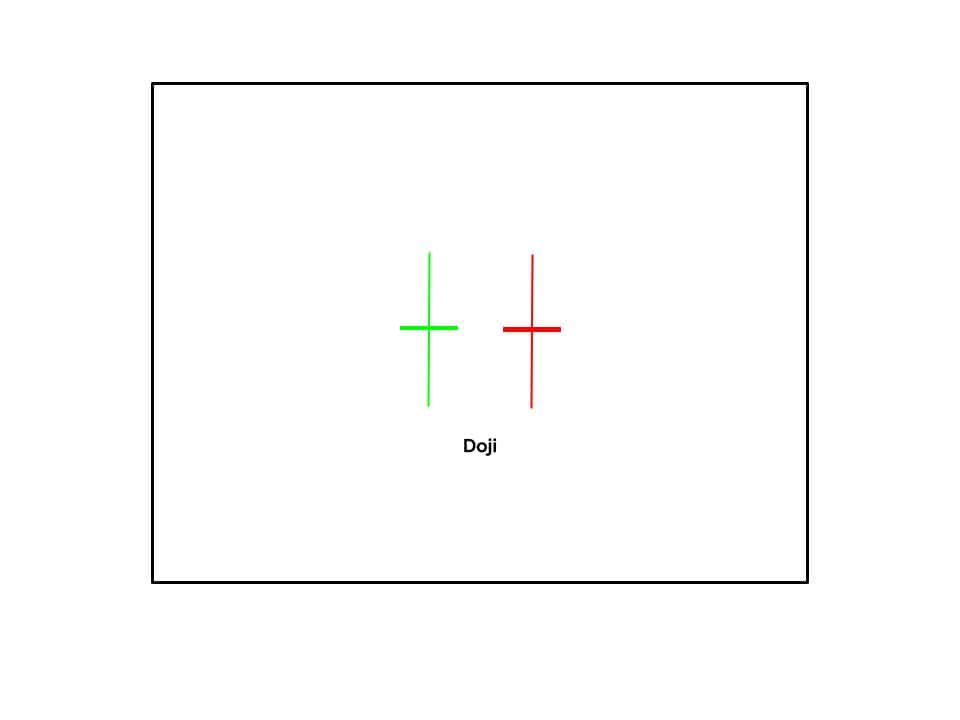
The Spinning Top Pattern
This pattern is characterized by a small body between two long shadows.
It suggests buyers and sellers were active during the time frame, but neither could gain a decisive advantage.
Whether it appears after an uptrend or a downtrend, its presence indicates that the prevailing trend’s momentum might wane, paving the way for either a continuation or a reversal.
The true significance is best understood by examining the candles that precede and succeed it and other concurrent technical indicators.
In addition, it also serves as a stop level at price extremes or before a rally or selloff and can be leveraged in a risk management strategy.
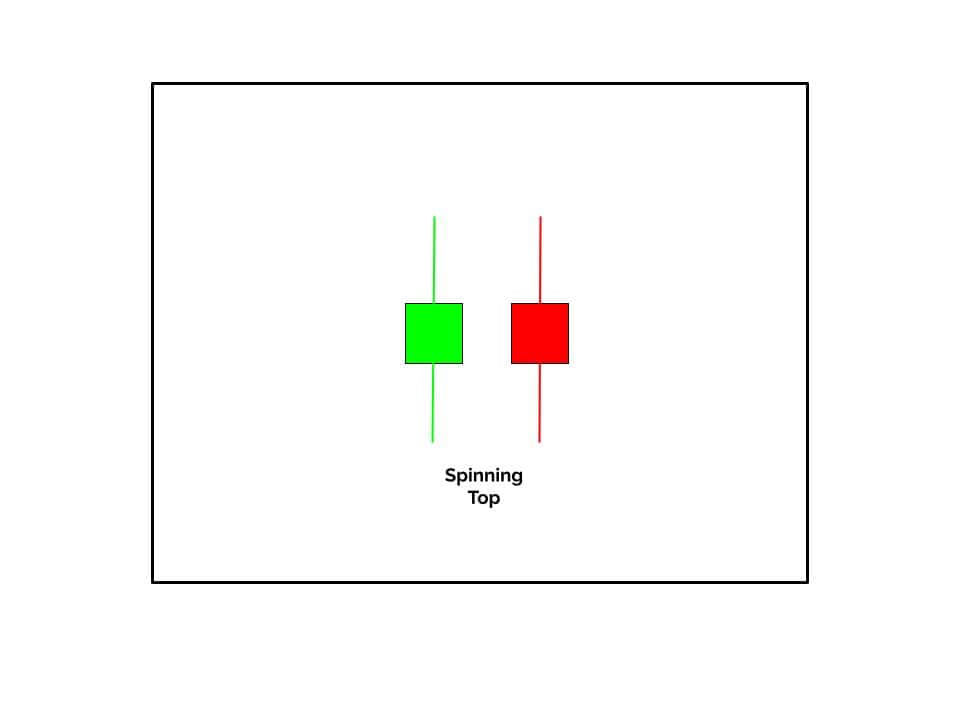
Comparing Indecision Candle Patterns
While these patterns serve as harbingers of market indecision, they have distinct characteristics that set them apart.
The Doji, with its almost non-existent body, directly balances buying and selling pressures, signaling a potential turning point in the market.
The Spinning Top, on the other hand, with its discernible body, albeit small, suggests a tug-of-war between buyers and sellers, but with neither side gaining a clear upper hand.
Both patterns underscore the importance of market context; their appearance after a strong trend is particularly noteworthy.
However, their differences in formation and interpretation mean that traders must approach each with a nuanced understanding, ensuring that their strategies align with the specific insights each pattern provides.
Practical Tips for Trading with These Patterns
Trading with these patterns requires more than pattern recognition; it demands a strategic approach rooted in practical wisdom.
These candlestick patterns offer warning signs of a possible reversal in a trending market.
The indecision they describe is a reflection of traders believing a trend is coming to an end.
In contrast, a range bound or sideways market can create these candles, and the implications are less defined since ranges are volatile.
The indecision in a single candle is also in a sideways pattern.
This is one reason why trading ranges successfully is more difficult than trading trending markets.
Using Indecision Candles with the RSI
The Relative Strength Index (RSI) is a momentum oscillator that measures the speed and change of price movements. It typically ranges from 0 to 100.
When combined with either pattern, the RSI can offer a more comprehensive view of potential market reversals.
For instance, a Doji appearing when the RSI is overbought (typically above 70) may signal an impending Bearish reversal.
Conversely, a Spinning Top forming when the RSI is in oversold territory (usually below 30) can hint at a bullish turnaround.
By juxtaposing these candlestick patterns with the RSI’s insights on overbought or oversold conditions, traders can more robustly confirm potential price direction changes, reducing the likelihood of false signals.
The example below combines these Japanese candlestick patterns with the RSI to find trading opportunities.
In April 2015, the Spinning Top marked the end of a brief rally retracement. This price action coincided with the RSI finding support at its midline, representing an entry opportunity.
This price and indicator action repeated in July, with a Doji initiating a quick pullback before the rally resumed. That Doji coincides with an overbought RSI, which is a take-profit signal.
The second Doji comes at the end of a string of small candles. This consolidation precedes a move higher, with the RSI moving back into overbought territory.
This is a late entry signal for traders convinced the rally will continue.
The last Spinning Top appeared after a reversal in January 2016 and represents an entry since the RSI is retreating from an overbought condition and moving lower.
Bullish traders should be out of this trade by then.
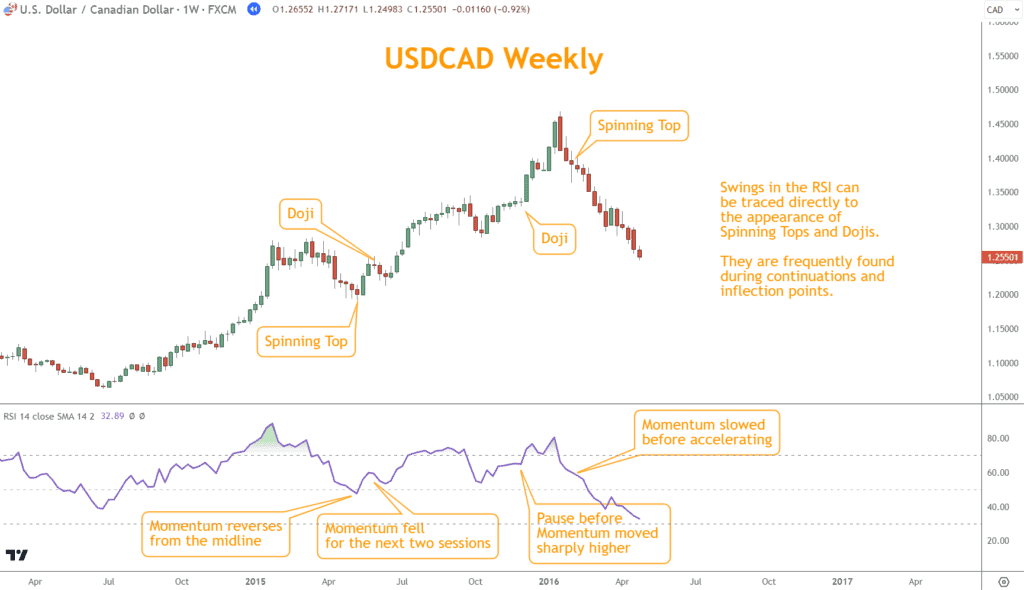
Combining Indecision Candles with Chart Patterns
Chart Patterns, such as the bearish Rising Wedge, Double Tops, or Triangles, provide traders with a visual representation of market psychology and potential future price movements.
When either of these patterns emerges within the context of these more giant formations, they can offer crucial insights into the pattern’s validity and potential completion.
The example below is a good illustration of a failed chart pattern.
The bearish Rising Wedge’s apex has a Doji in its center, illustrating trader uncertainty and consolidation.
If prices broke to the downside, this would be a grand short entry, but since it failed, traders can confidently believe the rally will continue.
The candle’s low can be used as a stop behind a trade higher for risk management and position sizing.
By integrating the short-term indecision signals from these patterns with the broader context provided by chart patterns, you can make more informed decisions about entry and exit points.
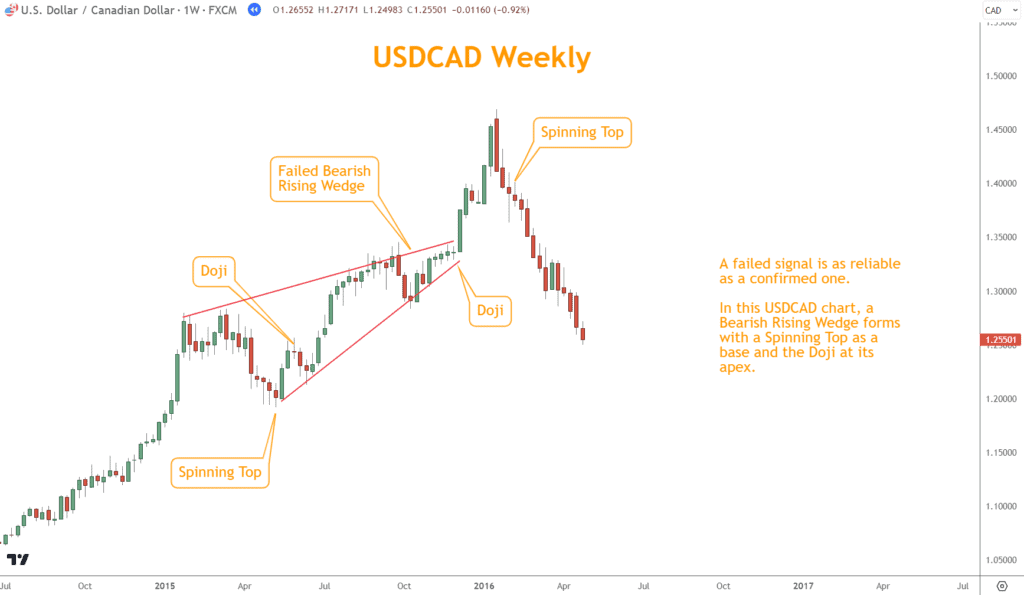
Combining Indecision Candles with Support and Resistance
Support and Resistance levels are foundational concepts in technical analysis.
They represent price levels where the market has historically shown a strong buying or selling response.
The appearance of either candle pattern near these levels can amplify their significance.
If the candle forms near a resistance level after a rally, it might suggest that the resistance is holding, and a reversal could be imminent.
On the other hand, near a support level during a selloff might indicate potential buying pressure and a possible upward bounce.
In the example below, a Spinning Top coincides with 1.2000 support as an entry point to continue the rally.
A few weeks later, it foreshadows another pullback before the rally starts moving higher again.
The second Doji marks the end of consolidation, leading to a sizeable rally and a reversal.
The second Spinning Top marks the beginning of a few small candles before they fall beneath 1.3800, at which point long traders should have exited their positions.
Traders interested in a short position could use that candle or one of the following two candles to set a stop level and position size for a short trade starting there.
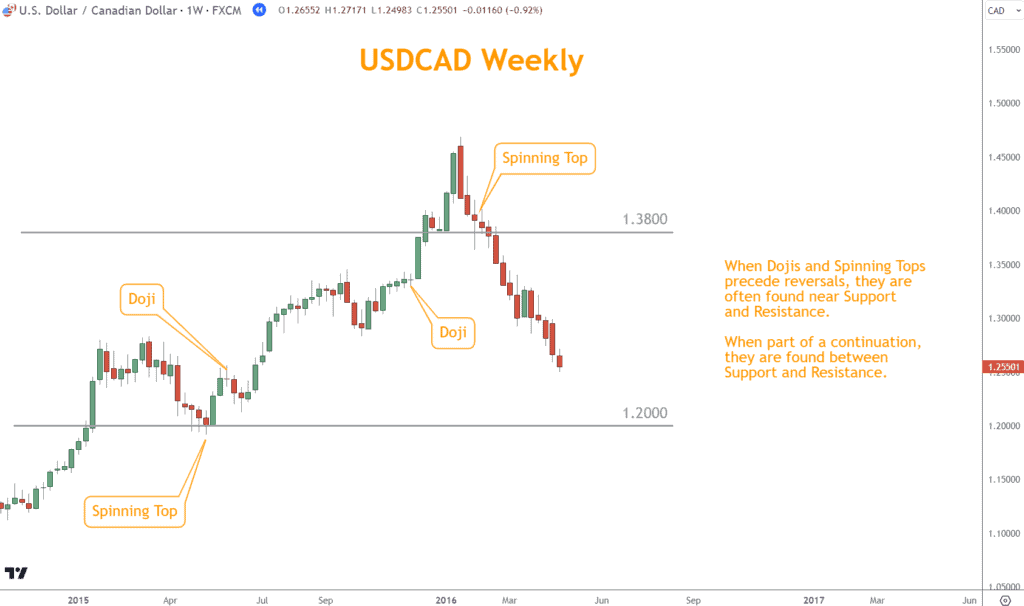
Observing these candlestick patterns with established support and resistance zones can help you better understand potential price reactions at these critical levels, allowing for more strategic trade placements and risk management.
Lastly, employing stop-loss orders is crucial for risk management. By setting predefined exit points, you can manage your risk effectively, ensuring that potential losses remain controlled even if the market moves against their predictions.
Conclusion
These are essential indicators that show market sentiment.
Their appearance on charts is a testament to moments of market indecision, offering valuable insights into potential price direction shifts.
However, as with all trading tools, their efficacy is magnified when used judiciously and with other indicators.
If you learn the details of these patterns and combine them with a careful trading strategy, you can make better and more accurate decisions when dealing with currency markets.
This will give you more confidence and help you make responsible choices.
What’s the Next Step?
Select a favorite chart and look for Dojis and Spinning Tops using what you learned in this article.
In addition, look for opportunities to coincide them with other technical analysis tools and techniques to see how they work together.
Combining Momentum, Japanese Candlesticks, and Support and Resistance can give you a comprehensive view and understanding to make trading easier.
If you need help developing an analysis process, you can use our Six Basics of Chart Analysis. If you’re unfamiliar with the Six Basics, you can learn them here for free.
The “Six Basics” will give you a strong foundation in chart analysis, which you can incorporate into your knowledge of these patterns.
In addition, when you get the “Six Basics,” you’ll also get Forex Forecast delivered to your inbox every Sunday.
Forex Forecast includes:
- Trade Ideas and Analysis
- I will use the Six Basics of Chart Analysis and Advanced Strategies to show you the trade opportunities I’m watching.
- Case Studies from Around the Web
- Watch how applying the Six Basics worked on some of the best, most profitable trades.
- Trading Education Guides and Videos
- Want to learn most Six Basics techniques and advanced strategies?
- I produce videos and guides to help you learn and improve trading practices.
- Links to New Articles
- I publish new articles on topics traders will want to know about every week, and you can find out when they post.
- Positionforex.com News
- Did something change at positionforex.com? Learn about it here first!
- Links to upcoming webinars
- Attend free webinars to improve your trading.
- And Much More
- Tools, Membership-only Videos, and more will be released in the Forex Forecast.
The best part – it’s completely free.

Frequently Asked Questions (F.A.Q)
What is a Doji Candlestick Pattern?
It is a candlestick pattern characterized by a small or non-existent body. It indicates that the opening and closing prices for a given time frame were nearly identical, which signifies market indecision.
How Do These Patterns Differ?
While both patterns indicate market indecision, a Spinning Top has a small body with long upper and lower shadows, suggesting a tug-of-war between buyers and sellers.
A Doji, on the other hand, has an almost non-existent body.
Can I Trade Solely Based on These Patterns?
While these two patterns provide valuable insights, combining them with other technical indicators and tools is advisable for a more comprehensive trading strategy.
How Do I Confirm the Validity of These Patterns?
Subsequent candles often confirm a potential upward move. For instance, a bullish candle following a Doji might confirm a potential upward move.
Other indicators like RSI or observing support and resistance levels can provide further confirmation.
How Frequently Do These Patterns Appear in Forex Trading?
The frequency can vary based on the currency pair and market conditions.
While they are relatively common, they appear more significant after a pronounced trend or near crucial support and resistance levels.
Is There a Risk of False Signals with These Patterns?
Like all technical indicators, there’s a possibility of false signals.
This is why traders often seek confirmation from subsequent candles or other technical tools before making decisions based on these patterns.

